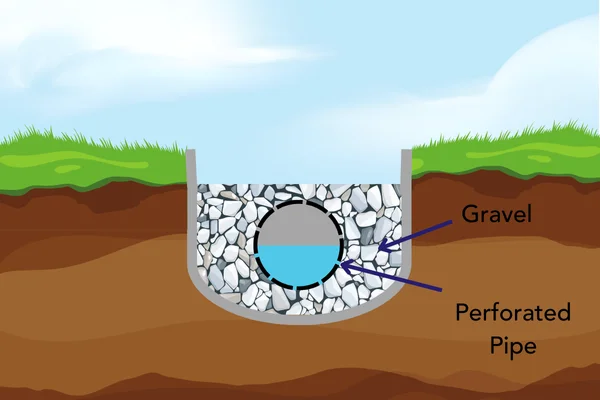The Ultimate Guide to French Drain Systems
Having been recognised as an efficient drainage solution since as far back as 1859, French drains are designed to redirect water away from areas where it might usually pool. Also known as trench blind drains, rubble drains, and rock drains, they’re widely installed across residential and commercial projects as part of the wider drainage system.
We’ve created an ultimate guide to French drains, so you know what they are and how they work, the benefits they offer, the potential downsides, and how to maintain them.
What is a French Drain System?
While a typical drain works to quickly remove surface water before it can saturate the ground, a French drain captures and removes water once it has saturated the ground.
A French drain consists of a perforated pipe which is laid in the ground, usually in a trench with gravel, allowing water that pools around a property to enter the pipe and drain away from the building. As well as pooling water, subsoil and other loose sediment can be washed away, too. The drain reduces the risk of water damage that can occur because of increased standing water in below ground structures, or persistent dampness.
The Purpose of French Drains
The main purpose of a French drain is to redirect water that is consistently pooling or leaking into a property away from the building.
For example, if you regularly experience water in your cellar after heavy rain, a French drain outside your home can prevent it from happening, minimising the risk of damp and mould, and damage to the foundations of the building.
What Does a French Drain Look Like?
 A French drain consists of a trench which is lined with a filter membrane and is fitted with a perforated pipe. The trench is then filled with gravel to surround the pipe. One end of a French drain is elevated and referred to as a drain field. The drain field is where the groundwater or excess surface water enters the drainpipes. The French drain exit point is situated at a lower point, enabling water to leave the drain.
A French drain consists of a trench which is lined with a filter membrane and is fitted with a perforated pipe. The trench is then filled with gravel to surround the pipe. One end of a French drain is elevated and referred to as a drain field. The drain field is where the groundwater or excess surface water enters the drainpipes. The French drain exit point is situated at a lower point, enabling water to leave the drain.

Talk to your local Metro Rod specialist
We are always happy to arrange a free site assessment and no obligation quotations for any work you might need. Alternatively, you can call our emergency hotline number on 0800 66 88 00
Get in touch Drainage Services